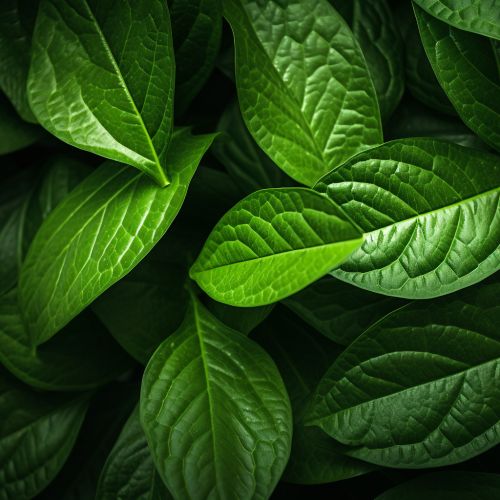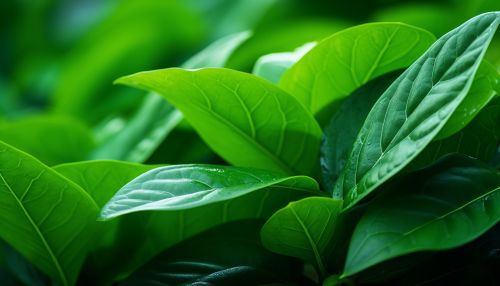Autotrophic
Overview
Autotrophs are organisms that can produce their own food from the substances available in their surroundings using light (photosynthesis) or chemical energy (chemosynthesis). They are the producers in a food chain, such as plants on land or algae in water. Autotrophs are fundamental to the food chains of all ecosystems in the world. They take energy from the environment in the form of sunlight or inorganic chemicals and use it to create food energy.


Classification of Autotrophs
Autotrophs can be classified into two types: photoautotrophs and chemoautotrophs. The energy for photoautotrophs comes from sunlight absorbed through structures containing chlorophyll, like chloroplasts in plants. Chemoautotrophs, on the other hand, derive energy from inorganic chemical reactions. They are able to survive in extreme environments such as deep sea vents, where sunlight cannot penetrate.
Photoautotrophs
Photoautotrophs are organisms that carry out photosynthesis to acquire energy. They use light energy to convert carbon dioxide and water into glucose and oxygen. The process of photosynthesis occurs in the chloroplasts, specifically using chlorophyll, the green pigment involved in photosynthesis.
Examples of photoautotrophs include plants, algae, and certain types of bacteria such as cyanobacteria. These organisms are vital to life on Earth as they produce most of the oxygen in the atmosphere and are at the base of nearly every food chain.
Chemoautotrophs
Chemoautotrophs are organisms that obtain energy by the oxidation of electron donors in their environments. These molecules can be hydrogen sulfide, elemental sulfur, ferrous iron, and ammonia. Unlike photoautotrophs, chemoautotrophs do not require sunlight for the production of energy. Instead, they use the chemical energy from the oxidation of inorganic compounds to convert carbon dioxide into organic compounds.
Examples of chemoautotrophs include bacteria and archaea that live in hostile environments such as deep sea vents or hot springs. They are the primary producers in such ecosystems, supporting life in extreme environments where other organisms cannot survive.
Role in Ecosystems
Autotrophs play a crucial role in ecosystems as they are the primary producers that sustain all other life forms. They are at the base of the food chain, converting inorganic carbon dioxide into organic carbon compounds that other organisms, known as heterotrophs, use for energy.
In addition to their role in the food chain, autotrophs also play a significant role in the carbon cycle. They help to regulate the amount of carbon dioxide in the atmosphere by converting it into organic compounds. This process not only provides energy for the autotrophs but also helps to mitigate the effects of climate change.
Autotrophs and Photosynthesis
Photosynthesis is the process by which photoautotrophs convert light energy into chemical energy. This process takes place in the chloroplasts of plant cells where light energy is absorbed by the pigment chlorophyll. This energy is then used to convert carbon dioxide and water into glucose, a type of sugar, and oxygen.
The process of photosynthesis can be divided into two stages: the light-dependent reactions and the light-independent reactions (also known as the Calvin cycle). The light-dependent reactions occur in the thylakoid membranes of the chloroplasts where light energy is converted into chemical energy in the form of ATP and NADPH. The light-independent reactions occur in the stroma of the chloroplasts where the ATP and NADPH produced in the light-dependent reactions are used to convert carbon dioxide into glucose.
Autotrophs and Chemosynthesis
Chemosynthesis is the process by which chemoautotrophs convert inorganic compounds into organic compounds. This process is similar to photosynthesis, but instead of using light energy, chemoautotrophs use the energy from chemical reactions to convert carbon dioxide and water into glucose and oxygen.
Chemosynthesis occurs in bacteria and other organisms that live in environments where sunlight is not available, such as deep sea vents or underground. These organisms use the energy from the oxidation of inorganic compounds, such as hydrogen sulfide or methane, to produce glucose and other organic compounds.
Conclusion
Autotrophs, whether they are photoautotrophs or chemoautotrophs, are essential to life on Earth. They are the primary producers in all ecosystems, converting inorganic compounds into organic compounds that other organisms can use for energy. In addition, they play a crucial role in regulating the amount of carbon dioxide in the atmosphere, helping to mitigate the effects of climate change.
